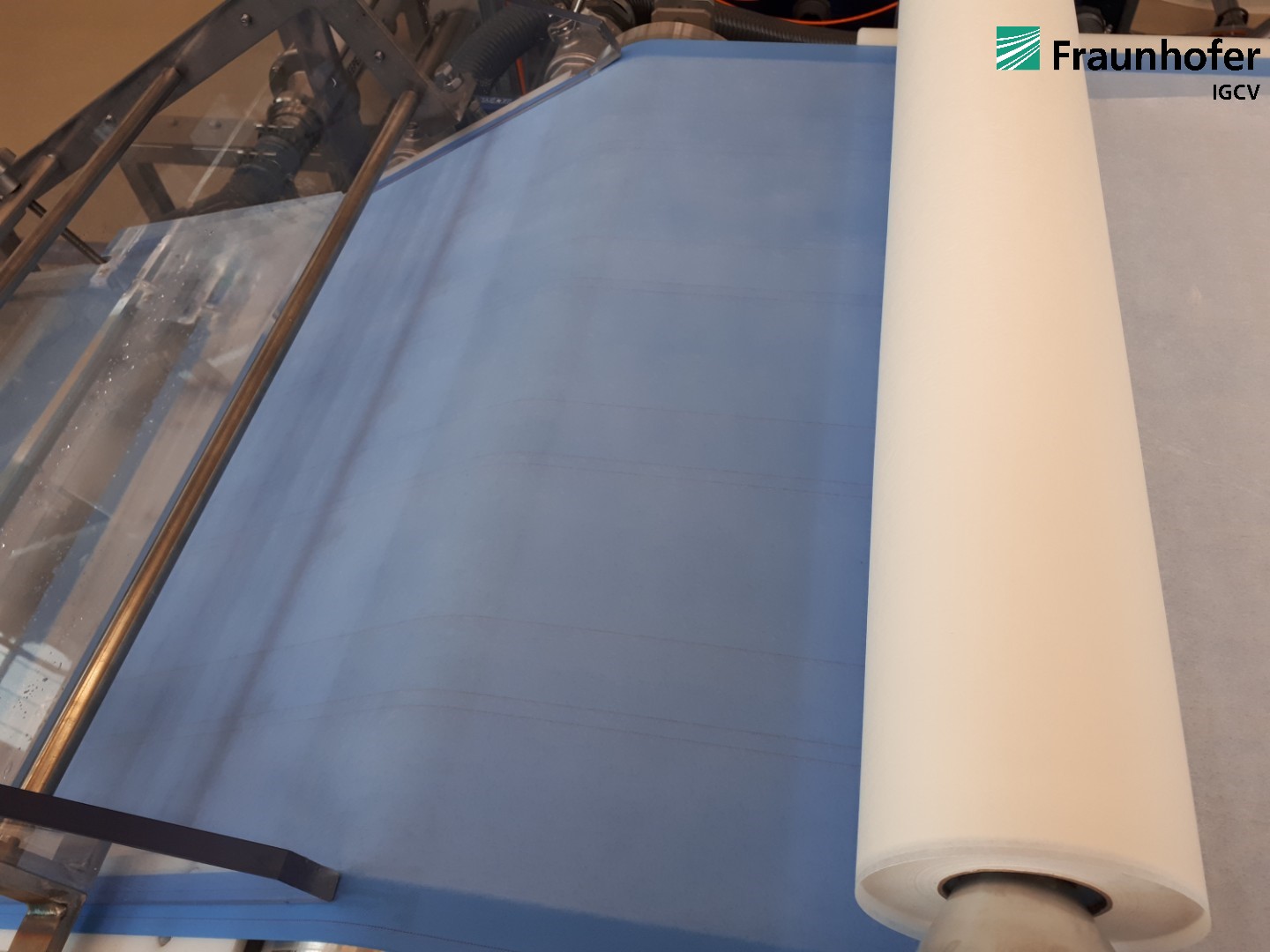We aim to provide optimized nonwoven materials as feedstock for subsequent antiviral coatings and assess and demonstrate the high technological potential of wetlaid technology in this field of application.
For this purpose, an existing pilot wetlaid nonwoven line was specifically modified on a pilot plant scale. Thus, it is possible to produce nonwoven materials from micro-staple fibers in the required very high quality in terms of uniformity, basis weight, blending, and thickness profile with high reproducibility. A standard PP nonwoven was used as a comparison system, produced using melt-blown technology following the current state of the art. In addition to the PP comparison variants, however, the processing of PLA, viscose, and PET staple fibers, among others, was also investigated. The focus here is on maximum fiber fineness (microfibers) in each case to achieve the largest possible specific fiber surface or effective area in the nonwoven. To emphasize the significantly increased flexibility of wetlaid nonwoven technology, innovative variants based on modified bi-component fibers with maximized fiber surface area and split fibers are also being conceptually tested.
In addition to aspects of direct material and process development, the scale of the pilot plant will provide a comprehensive data basis for estimating subsequent scaling up to industrial series production. This will give a technological starting point for the ramp-up of efficient, national production of nonwoven-based infection control materials based on wet-laying technology.
